Related Research Articles
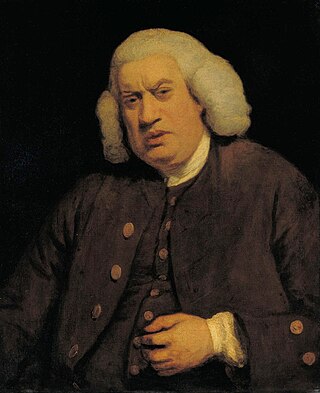
Samuel Johnson, often called Dr Johnson, was an English writer who made lasting contributions as a poet, playwright, essayist, moralist, literary critic, sermonist, biographer, editor, and lexicographer. The Oxford Dictionary of National Biography calls him "arguably the most distinguished man of letters in English history".

Hester Lynch Thrale Piozzi, a Welsh-born diarist, author, socialite and patron of the arts, is an important source on Samuel Johnson and 18th-century English life. She belonged to the prominent Salusbury family, Anglo-Welsh landowners, and married first a wealthy brewer, Henry Thrale, with whom she had 12 children, then a music teacher, Gabriel Mario Piozzi. Her Anecdotes of the Late Samuel Johnson (1786) and her diary Thraliana, published posthumously in 1942, are the main works for which she is remembered. She also wrote a popular history book, a travel book, and a dictionary. She has been seen as a protofeminist.

Henry Thrale was a British politician who sat in the House of Commons from 1765 to 1780. He was a close friend of Samuel Johnson. Like his father, he was the proprietor of the large London brewery H. Thrale & Co.
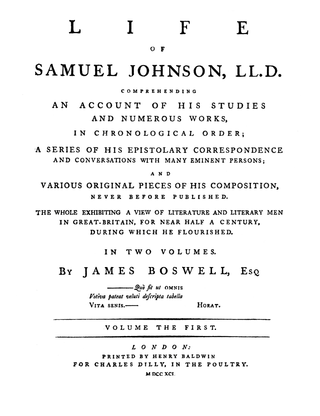
The Life of Samuel Johnson, LL.D. (1791) by James Boswell is a biography of English writer Dr. Samuel Johnson. The work was from the beginning a critical and popular success, and represents a landmark in the development of the modern genre of biography. It is notable for its extensive reports of Johnson's conversation. Many have called it the greatest biography written in English, but some modern critics object that the work cannot be considered a proper biography. Boswell's personal acquaintance with his subject began in 1763, when Johnson was 54 years old, and Boswell covered the entirety of Johnson's life by means of additional research. The biography takes many critical liberties with Johnson's life, as Boswell makes various changes to Johnson's quotations and even censors many comments. Nonetheless, the book is valued as both an important source of information on Johnson and his times, as well as an important work of literature.
Sir John Salusbury Piozzi Salusbury was a British civil servant and, briefly, a military officer during the Battle of Waterloo. He was named after his adopted grandfather, Sir John Salusbury.

Sir John Hawkins was an English author and friend of Dr Samuel Johnson and Horace Walpole. He was part of Johnson's various clubs but later left The Literary Club after a disagreement with some of Johnson's other friends. His friendship with Johnson continued and he was made one of the executors of Johnson's will.
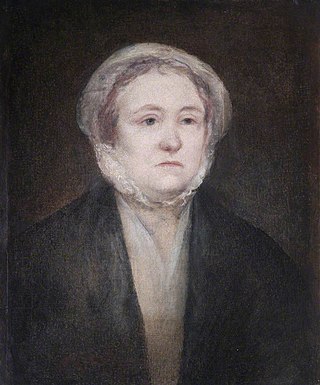
Anna Williams was a Welsh poet. She was a close companion of the writer Samuel Johnson, who said he was "very desolate" when she died. Cataracts left Williams blind or visually impaired in the 1740s, when Johnson took her under his wing and helped to support her. She joined his household until her death, apart from an interval of six years. In return, Williams supervised Johnson's household management and expenses. Besides poetry, she wrote an unfinished dictionary of philosophical terms and translated and published a French biography of the emperor Julian.
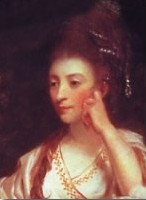
The Thraliana was a diary kept by Hester Thrale and is part of the genre known as table talk. Although the work began as Thrale's diary focused on her experience with her family, it slowly changed focus to emphasise various anecdotes and stories about the life of Samuel Johnson. The work was used as a basis for Thrale's Anecdotes of the Late Samuel Johnson, but the Thraliana remained unpublished until 1942. The anecdotes contained within the work were popular with Thrale's contemporaries but seen as vulgar. Among 20th-century readers, the work was popular, and many literary critics believe that the work is a valuable contribution to the genre and for providing information about Johnson's and her own life.
The Life of Samuel Johnson or Life of Samuel Johnson, LL. D. was written by John Hawkins in 1787. It was the first full biography of Samuel Johnson—with Thomas Tyers's A Biographical Sketch of Dr Samuel Johnson being the first short postmortem biography. Hawkins was a friend of Johnson's, but many in Johnson's circle did not like him. After Johnson's death, Hawkins was approached to produce a biography of Johnson and an edition of his works. His biography described Johnson's life, including previously unknown details about his writing career, but it was plagued by digressions into unrelated topics. Hawkins's Life of Samuel Johnson came under swift attack from critics, friends of Johnson's, and his literary rival, James Boswell immediately after its publication. Many of the critics attacked Hawkins for his lack of a strict focus on Johnson's life or for his unfavourable depiction of Johnson in various circumstances.
The Anecdotes of the Late Samuel Johnson or the Anecdotes of the Late Samuel Johnson, LL.D. During the Last Twenty Years of His Life by Hester Thrale, also known as Hester Lynch Piozzi, was first published 26 March 1786. It was based on the various notes and anecdotes of Samuel Johnson that Thrale kept in her Thraliana. Thrale wrote the work in Italy while she lived there for three years after marrying Gabriel Piozzi.
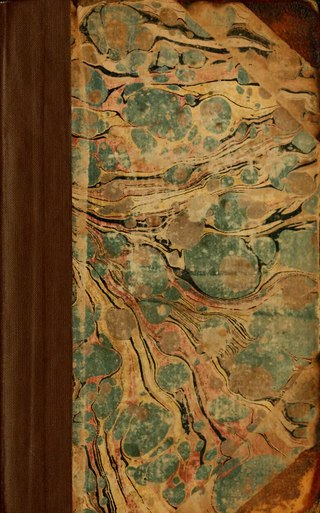
An Essay on the Life and Genius of Samuel Johnson, LL. D. was written by Arthur Murphy and published in 1792. The work serves as a biography of Samuel Johnson and an introduction to his works included in the volume. Murphy also wrote a biography for Henry Fielding in a 1762 edition of his Works and a biography for David Garrick, the Life of David Garrick, in 1801.
A Biographical Sketch of Dr Samuel Johnson was written by Thomas Tyers for The Gentleman's Magazine's December 1784 issue. The work was written immediately after the death of Samuel Johnson and is the first postmortem biographical work on the author. The first full length biography was written by John Hawkins and titled Life of Samuel Johnson.
The health of Samuel Johnson has been a focus of the biographical and critical analysis of his life. His medical history was well documented by Johnson and his friends, and those writings have allowed later critics and doctors to infer diagnoses of conditions that were unknown in Johnson's day.

Hester Maria Elphinstone, Viscountess Keith, born Hester Maria Thrale, was a British literary correspondent and intellectual. She was the eldest child of Hester Thrale, diarist, author and confidante of Samuel Johnson, and Henry Thrale, a wealthy brewer and patron of the arts. She became the second wife of George Elphinstone, 1st Viscount Keith.
Samuel Johnson, a British intellectual, wrote dozens of essays that defined his views on the politics of his time.
Robert William Chapman, usually known in print as R. W. Chapman, was a British scholar, book collector and editor of the works of Samuel Johnson and Jane Austen.

William Seward was an English man of letters, known for his collections of anecdotes. he was closely acquainted in London with Samuel Johnson, the Thrales and the Burneys.
Susannah Dobson née Dawson was a translator from the south of England, the daughter of John Dawson of "the parish of St Dunstan, London". She was notably concerned with the 14th-century Italian humanist Petrarch.
Katherine Canby Balderston was an American scholar of 18th century English literature. A professor emerita at Wellesley College, she was a winner of the Rose Mary Crawshay Prize in 1941.

According to Queeney is a 2001 Booker-longlisted biographical novel by English writer Beryl Bainbridge. It concerns the last years of Samuel Johnson and his relationship between Hester Thrale and her daughter 'Queeney'. The bulk of the novel is set between 1765 and his death in 1784, with the exception of the correspondence from H. M. Thrale (Queeney) to Laetitia Hawkins from 1807 onwards, at the end of the chapters.
References
- Balderston, Katharine C. "Introduction" in Thraliana: The Diary of Mrs Hester Lynch Thrale (Later Mrs. Piozzi) 1776-1809. Vol. I ed. Katherine C. Balderston, pp. ix-xxxii Oxford: Clarendon Press, 1951.
- Bate, Walter Jackson. Samuel Johnson. New York: Harcourt Brace Jovanovich, 1977.
- Bloom, Harold. "Hester Thrale Piozzi 1741-1821" in Women Memoirists Vol II, ed. Harold Bloom, pp. 74–76. Philadelphia, Chelsea House, 1998.
- Boswell, James (1986), Hibbert, Christopher, ed., The Life of Samuel Johnson, New York: Penguin Classics, ISBN 0-14-043116-0.
- Boswell, James. Boswell's Life of Johnson, together with Boswell's Journal of a tour of the Hebrides and Johnson's Diary of a journey into North Wales Vol I. ed. George Birkbeck Norman Hill and Lawrence Fitzroy Powell, Oxford: Clarendon Press, 1934.
- Davis, Bertram. "Introduction" in * The Life of Samuel Johnson, LL. D., ed. Bertram H. Davis, pp. vii-xxx. New York: Macmillan Company, 1961.
- Hawkins, John. The Life of Samuel Johnson, LL. D., ed. Bertram H. Davis. New York: Macmillan Company, 1961.
- Hill, G. Birkbeck, editor (1897), Johnsonian Miscellanies, Oxford .
- Thrale, Hester. Thraliana: The Diary of Mrs Hester Lynch Thrale (Later Mrs. Piozzi) 1776-1809. Vol. I ed. Katherine C. Balderston, pp. ix-xxxii Oxford: Clarendon Press, 1951.